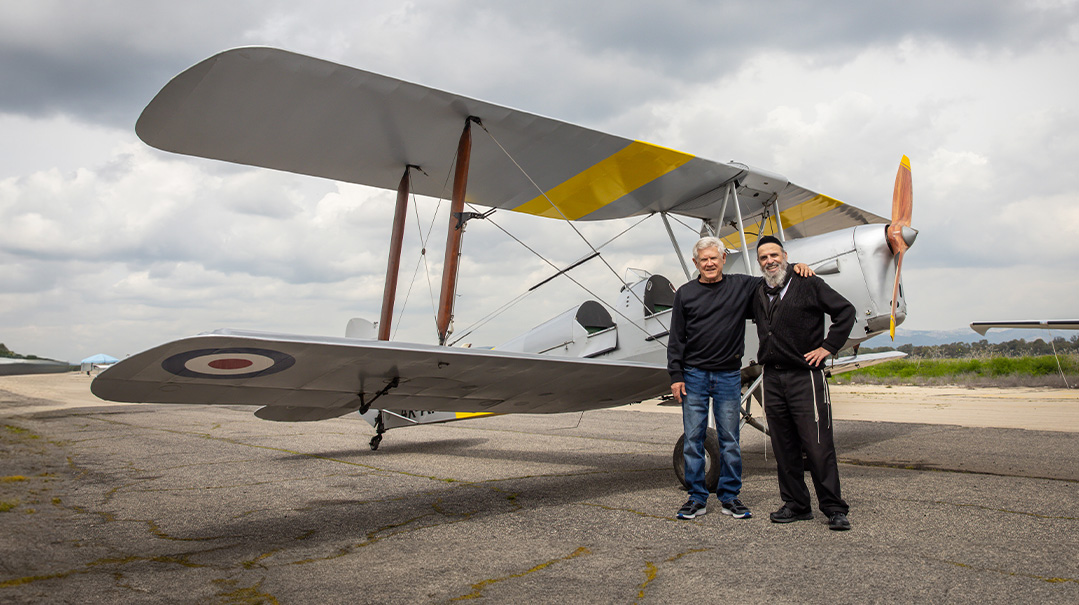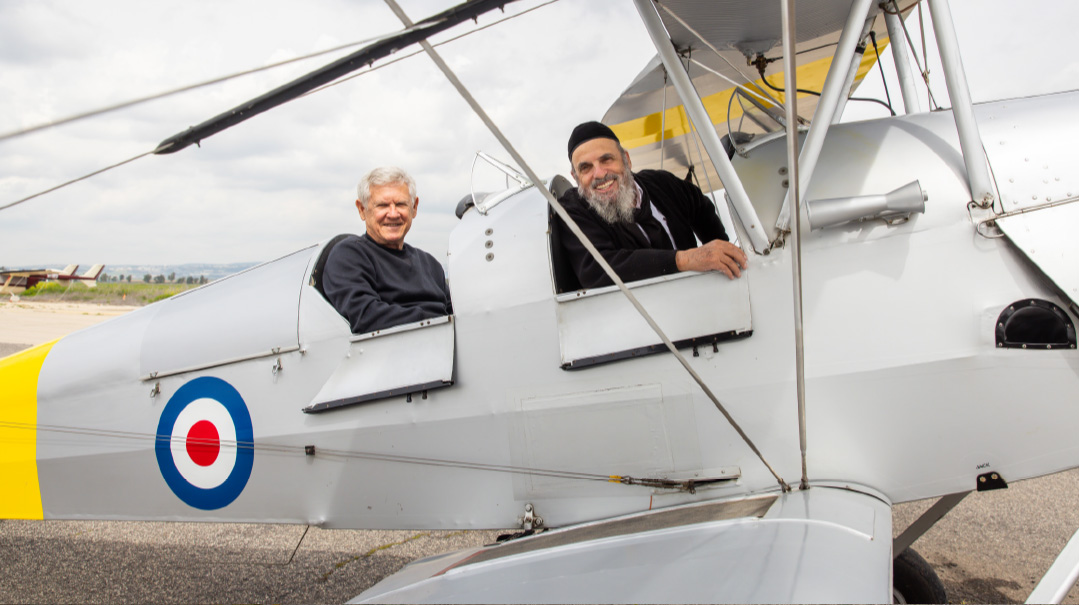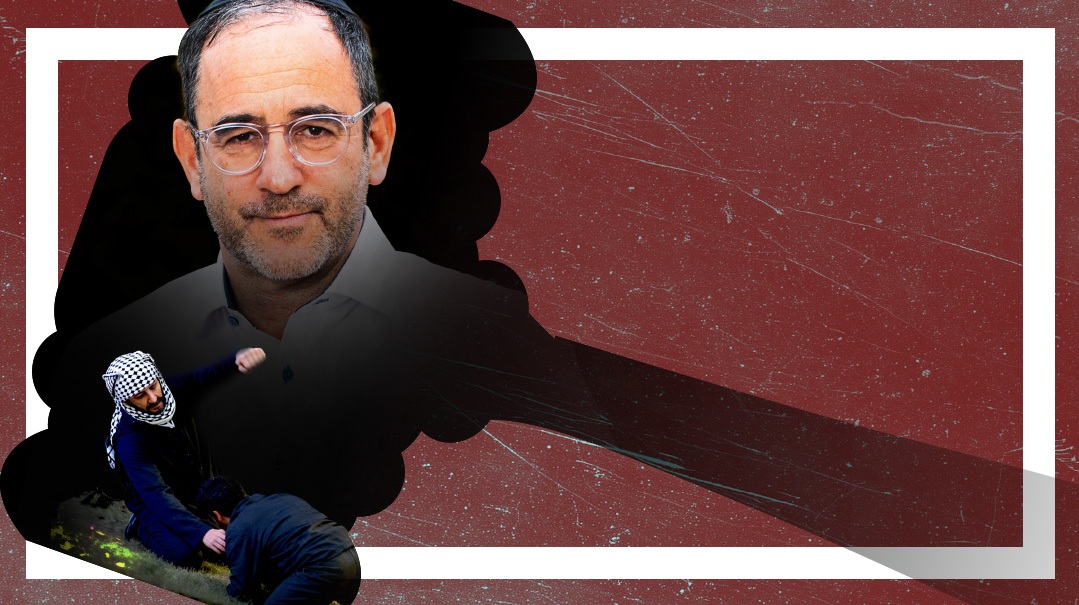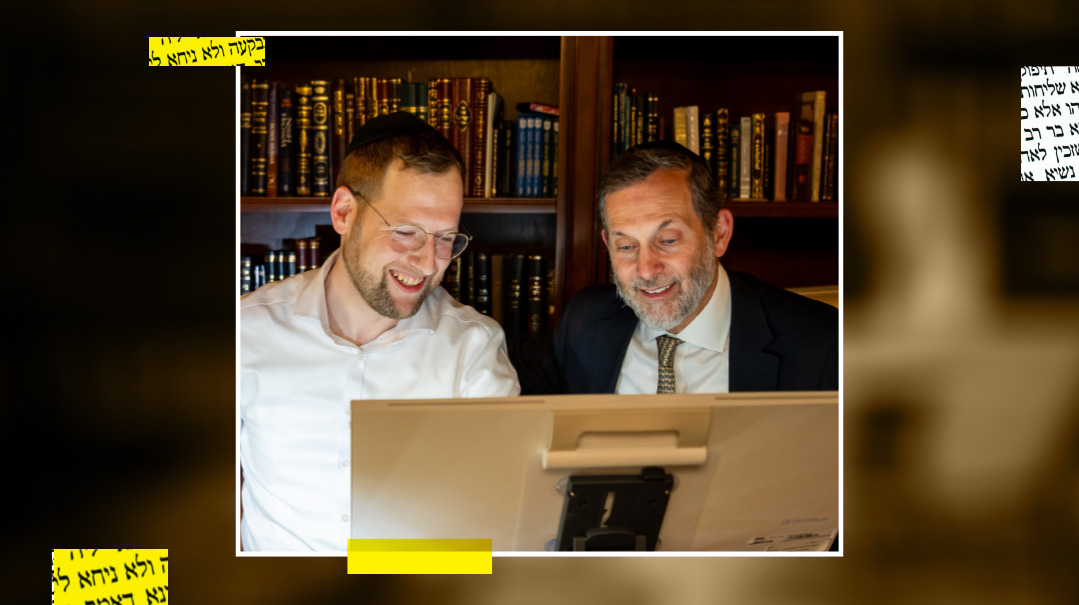Out of Thin Air
| August 8, 2023Two pilots marvel at the Divine plan that crossed their paths in the nick of time

Photos: Itzik Belinsky, Personal archives
Nadav Efrat is the only top-tier flight instructor in Israel today who looks like a middle-aged rabbi.
But that hasn’t stopped this former Israel Airforce combat helicopter pilot from serving as head instructor at the Meggido flight school, having clocked in tens of thousands of hours flying helicopters and single and multi-engine light aircraft.
Nadav is also a long-time chozer b’teshuvah, who, after being discharged from the air force and completing a degree at the Technion, married and raised a family in the northern chareidi town of Rechasim, where he co-founded a beis medrash and kollel which he traveled to the US several times a year to fund.
And that’s how, about 15 years ago, he found himself on an El Al flight that would both close a circle and reopen memories of the most harrowing night of his life.
Right after takeoff, the captain of the jumbo jet announced: “Dear passengers, this is your captain Aharon Sagi, and I’m happy to be hosting you on El Al Flight 001 to New York….”
“Aharon Sagi — I couldn’t believe it! I stopped the closest flight attendant and asked her to tell the captain that Nadav Efrat from the air force was on board,” Nadav relates.
Sagi, former air force flyer, was clearly surprised — he hadn’t seen Nadav in 35 years — and he asked the flight attendant to escort the passenger to the cockpit. As the heavy door opened, Sagi, now a commercial pilot, had a double surprise: Instead of a 50-something military man, here was a bearded chareidi rabbi in a suit with tzitzis hanging down like a banner.
“I hadn’t seen Aharon Sagi in over three decades,” Nadav says of that encounter, which would become the first of many, “but our connection was still there. Our lives had intersected years before, culminating in a dangerous and daring nighttime rescue behind enemy lines during the 1973 Yom Kippur War.”
Yom Kippur 2023 will mark 50 years since the war that caught everyone by surprise, and surely much ink will be spilled over the next few months rehashing and analyzing the events leading up to and during those difficult days of so much pain and loss. But for Aharon (Ahrele) Sagi and Nadav Efrat, it will continue to bring back the private wonder of lives intertwined in a pattern that only becomes evident in hindsight.
Aharon Sagi, or Ahreleh to his friends, is now a retired civilian pilot with more than 33,000 flying hours under his belt. Today he’s busy with his hobby of restoring old planes, but as with many of El Al’s crew, he began his career in the Israel Air Force.
Back in 1970, Ahreleh was a 23-year-old fighter pilot, trained to operate the Air Force’s new Phantom planes. His first love, though, was flight instruction, and because he was available on Fridays, he agreed to teach flying on a single-engine Piper Cub plane at a civilian flight club in Haifa.
While most of Ahreleh’s students were at least twice his age, one day, a 17-year-old high school student by the name of Nadav Efrat showed up at the airfield.
“Ever since I was a kid, I dreamed of being a pilot,” says Reb Nadav Efrat today, “and I allowed myself to dream big. When I was growing up in Kiryat Chaim outside Haifa, we had a neighbor who became orphaned. After his army discharge, he took most of his inheritance money, purchased a Stearman plane, and then got himself a civilian pilot’s license. He used to come speak with my father, and I always heard fascinating flight stories from him. Listening to him, I knew what I wanted to be when I grew up.”
But two things got in the way, and Nadav knew he’d have to fight to make his dream come true. One was that when Nadav was a senior in high school, the draft office medical board gave him a low profile of suitability for a combat unit in the army.
“I grew up in a very patriotic environment, and the thought of having a desk job horrified me, so I did everything I could to elevate my profile,” Reb Nadav relates. “I found out that a family doctor in our neighborhood also served on the medical board in the draft office, and I had my father contact him. The doctor invited me to another medical review, and there he persuaded his colleagues to give me a grade of 97% on the profile — and that’s how I was eventually able to sit for the exam to determine if I was suited for the IAF’s flight course.
The second impediment was money.
“I felt I needed some kind of booster course beforehand, and I’d heard that in Haifa, there was a flying club at the time — it didn’t bother me that I was the youngest one there, and besides, the price was rock-bottom. But it was still more than I was able to afford.”
To make money for the lessons, Nadav dug into the savings he’d been amassing since he was a kid. He’d go around collecting old shmattehs, items his neighbors had discarded or tossed into their yards. Each week, a man on a horse-drawn wagon would pass through the neighborhood announcing “alte zachen,” and Nadav would sell the peddler his scraps for a few lirot. Copper was especially valuable and its price was established by weight.
“I saved the money I earned to pay for my flying lessons,” Reb Nadav says. “At the airfield, I was sent to a young pilot named Aharon Sagi, who had been training to fly Phantom jets at the Ramat David base, and on Fridays he taught flying at the club in Haifa. I couldn’t believe my luck. The Phantom was then the king of the Air Force, responsible for the victory over Egypt in the War of Attrition. Here was an Air Force pilot, and a Phantom pilot to boot. I literally worshipped him.
“I told Aharon that my dream was to be a pilot, and that I had even received an invitation from the Air Force to be tested for suitability for a flying course. Aharon Sagi became my advocate, the person who believed in my dreams.
“But after four lessons, the next Friday I actually came to say goodbye. I told Aharon that I had to cancel our lessons, that I couldn’t continue because I’d run out of money and had no way to pay. Ahreleh seemed pretty disappointed, too — he had been so encouraging. He kept telling me I had a lot of natural talent, but that he couldn’t give me a break even if he wanted to because he was working as a volunteer.
“Yet as I was leaving, I turned around and asked Ahreleh if he thought I had a chance at being accepted to the Air Force’s flight course, and if yes, whether I’d pass. ‘You’re a natural,’ he told me encouragingly. ‘Don’t give up your dream. Just go for it! You can definitely do it!’
“For the next two years, those encouraging words kept ringing in my ears and gave me the confidence to push forward even when I thought of throwing in the towel.”
The next year, Nadav joined the Air Force, got his “wings” in November 1972, and in the spring of 1973, he successfully completed Flight Course 69 and was placed in the first helicopter squadron T124. Less than half a year later, the Yom Kippur War broke out.

After 50 years, Ahreleh Sagi and Nadav Efrat had a reunion at the Haifa air field, flying together again in the old single-engine Piper Cub
Crash Landing
It was to be the IAF’s most difficult war. On Yom Kippur, October 6, 1973, Egyptian ground forces crossed the Suez Canal, while Egypt’s planes swooped down on IDF soldiers along the front lines. Syrian planes also pummeled IDF positions, as Syria’s artillery shelled Israeli settlements while hundreds of its tanks swarmed westward, wresting control of a large part of the Golan Heights.
During the first two days of the war, the IAF’s mission was to block the enemy’s advance. IAF jets bombed and strafed Syrian forces under heavy threat from state-of-the-art Syrian SAM missiles. On October 7th, six IAF planes were shot out of the sky by Syrian fire, although along the Suez, the heroic efforts of Israel’s pilots succeeded in seriously damaging Egypt’s SAM capability: 32 SAMs were knocked out and 11 others damaged.
Once the IDF had regrouped and begun pushing the enemy back to its own territory, IAF planes on both fronts began attacking convoys, armor, and airfields in Egypt and Syria, and picking away at the two enemies’ air forces.
In response to surface-to-surface missile attacks on Israeli civilian targets, the IAF carried out attacks deep inside enemy territory, destroying important strategic targets including oil installations, government offices, refineries, and radio relay stations. They shot down about 60 enemy planes during the war, but the toll was high: 53 Israeli airmen were killed in the fighting.
Oops! We could not locate your form.







